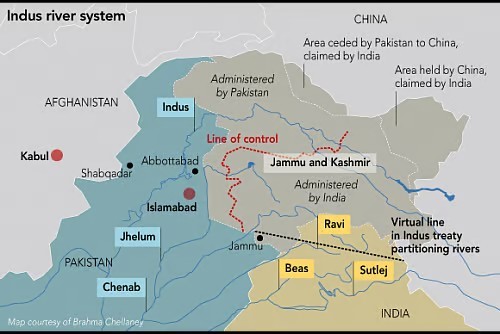Indus Waters Treaty Suspension: Legal and Strategic Implications
Indus Waters Treaty Suspension: Legal and Strategic Implications
Why in the News ?
Following the April 22 Pahalgam terror attack, India announced suspension of the Indus Waters Treaty (IWT) with Pakistan. This move has raised legal and diplomatic questions under international law, particularly the Vienna Convention on the Law of Treaties (VCLT).
Legal Framework and India’s Position:
- The 1960 Indus Waters Treaty grants India rights over eastern rivers and Pakistan over western rivers.
- Under Article XII, the treaty cannot be unilaterally terminated; changes require a mutual agreement.
- India referred to the suspension as “holding in abeyance,” a term not recognized in VCLT (1969) or customary international law.
- VCLT Article 62 permits suspension if a “fundamental change in circumstances” occurs—India claims this clause applies.
- Despite not being a signatory, India is bound by VCLT principles recognized by the ICJ, e.g., in the Fisheries Jurisdiction
Precedents and Treaty Interpretation
- In the 1997 Gabcíkovo-Nagymaros case, ICJ rejected Hungary’s attempt to terminate a treaty due to political and environmental shifts, indicating a high bar for suspension.
- India’s current infrastructure lacks the capacity to store massive water volumes, limiting unilateral action.
Impact on Pakistan
- Over 80% of Pakistan’s agriculture and 1/3 of its hydropower rely on Indus waters.
- Uncertainty in water flow could destabilize Pakistan’s agrarian economy.
- India may explore new technical options, like redesigning hydro projects or drawdown flushing, increasing the risk of sudden water surges downstream.
Indus Water Treaty: Nature and Legal Framework●Signed in 1960, mediated by the World Bank, dividing six rivers: India controls eastern (Ravi, Beas, Sutlej), Pakistan controls western (Indus, Jhelum, Chenab). International and Regional Implications: ●Pakistan may approach World Bank, ICJ, or UNSC, risking internationalisation of a bilateral issue. |




